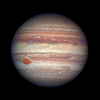A New Detective in Town
In criminal investigations, unique clothing rips around a knife wound can reveal a lot about the criminal: what type of knife they used or the force and angle of attack. A new stabbing machine that has at least 60 different ways to jab a knife into the fabric could help forensic scientists to re-enact the violent moment and catch the criminal. You can learn more about this stabbing machine from this PopSci story, and exercise your detective instinct by checking out the fabric tear patterns left by four types of knives.
Solar Flare Trio
On April 2-3, 2017, the sun bursted out three solar flares. Here’s one of the images that NASA’s Solar Dynamics Observatory captured of the event. Thanks to Earth’s atmosphere we can appreciate the beauty of these flares without worrying about any harmful effects from radiation. Thankfully, this week’s solar flares are mid level M-class ones, far less intense than the X-class flares that can disrupt communications on Earth.
Zooming in on Jupiter’s colorful clouds
This week, NASA’s Hubble Space Telescope took a close-up picture of Jupiter as it arrived at the nearest point to Earth, 415 million miles away. The highlight of the image is definitely the Great Red Spot, a swirling storm in Jupiter’s atmosphere that’s larger than Earth. On the lower right side, you can also see the Great Red Spot’s sidekick, “Red Spot Jr.”
Radar Analysis of a Landslide Disaster
The April 1st landslide in Mocoa, Colombia killed over 260 people. Now scientists are using radar images to assess the damages on local properties and the environment. As shown here, the greatest land mass movement (red) was from the top of a mountain, which shoved a ton of mud towards Mocoa (green). The radar used is called Sentinel-1, part of Europe’s Copernicus environment monitoring program.
IceBridge Flight Over Svalbard
For the past eight years, NASA’s Operation IceBridge flies over both the Arctic as well as Antarctica to survey the polar ice caps —and take amazing pictures. One of our favorite ones this week is shared by NASA ICE on Twitter. It takes us to see Svalbard’s Eidfjord in the distance.





